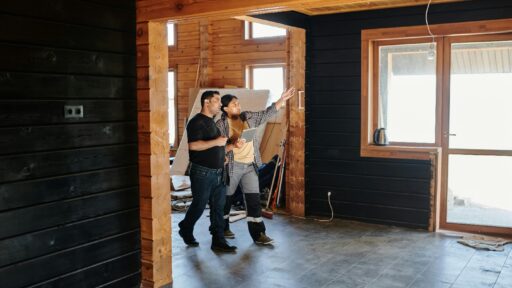Home gaming has become more than a pastime, it’s now a lifestyle, a form of self-expression, and even a professional pursuit for many. But while great hardware enhances gameplay, the design of your gaming room shapes the entire experience. From lighting and layout to color schemes and acoustics, a well-designed gaming room can transform your home into a personal retreat where style meets performance.
In this guide, we’ll explore how to design a gaming room that not only looks incredible but also feels immersive, comfortable, and uniquely yours.
The Importance of Game Room Design
Your gaming room is more than just a place to play, it’s an environment that enhances focus, creativity, and relaxation, whether your game focus is online slots or an adventure quest game. A thoughtfully designed space allows you to escape distractions and fully immerse yourself in your favourite worlds, whether you’re exploring an open-world adventure or playing slots online after a long day.
Designing a dedicated game room also helps maintain a healthy balance between entertainment and everyday life. When you walk into that space, it signals your brain that it’s time to unwind and enjoy yourself.
Choosing the Right Room or Location
The best game rooms start with smart location choices. You don’t need a large space, a spare bedroom, basement corner, or even part of your living room can work beautifully with the right design approach.
When selecting your location, consider:
Noise control: Try to choose a quieter area away from busy household traffic. Soundproofing panels or acoustic foam can help reduce echo and block outside noise.
Lighting: Natural light is great during the day, but too much glare can ruin visibility. Choose a space where you can easily control brightness with blinds or blackout curtains.
Ventilation: Consoles, PCs, and lighting setups generate heat. Ensure proper airflow or use fans to keep your game room cool and comfortable.
If you have an attic, garage, or basement, these spaces can be transformed into incredible themed gaming rooms with a little creativity and planning.
Designing the Layout and Flow
Before buying furniture or decor, plan your room layout. Think about how you’ll move through the space and where the main focal points will be. For most setups, the screen or monitor wall becomes the central feature.
Arrange seating to face your screen without glare or awkward angles. Leave enough room behind chairs and desks for movement and use rugs to define zones, especially if your game room doubles as a lounge or streaming area.
A handy tip is to sketch out a floor plan or use free online room design tools to visualize the setup before committing.
Game Room Lighting Ideas
Lighting is one of the most powerful tools in game room design. It sets the tone and enhances immersion while reducing eye strain.
There is ambient lighting that provides a soft, diffused light from either LED strips or smart bulbs so that they create a cozy, futuristic atmosphere. Or you could look into Accent lighting. This type highlights shelves, wall art, or even collectibles, through either spotlights or colour changing LEDs. Lastly, there is Task lighting; usually brought through a desk lamp or through an adjustable wall light, perfect to position near your keyboard or console area to keep things functional.
RGB lighting remains a popular choice among gamers for its ability to change color schemes instantly. You can match your lighting to the mood of the game or your streaming theme—whether that’s cool blue tones for calm focus or bold reds and purples for high-energy sessions.
Walls, Colors, and Themes
Color psychology plays a big role in your gaming room aesthetic. Darker shades like navy, charcoal, or deep green can create an intimate, cinematic feel, while lighter tones help smaller spaces look bigger.
To make your game room stand out, consider:
- Accent walls: Use paint, textured wallpaper, or LED panels to create a visual focal point behind your setup.
- Wall art: Display posters, digital prints, or canvas art of your favorite games or franchises.
- Themed decor: Create a unified look—sci-fi, retro arcade, minimalist, or fantasy-inspired designs are all popular.
Adding 3D wall panels or murals can give the space depth and personality, making your game room truly unique.
Storage and Hidden Design Features
A clutter-free game room not only looks better but functions better. Integrated storage keeps controllers, games, and accessories neatly tucked away. Consider floating shelves, wall-mounted racks, or built-in cabinets to keep the area organized.
For a sleek, modern design, hide cables behind walls or inside conduits. Some gamers even build false walls with hidden LED strips to create a glowing “halo” effect, giving the illusion that your setup is floating. It’s an impressive design trick that adds sophistication and atmosphere.
Furniture and Comfort Elements
While the focus here is design rather than equipment, the right furniture completes the look. A comfortable yet stylish chair, sectional sofa, or bean bag seating can make the room inviting for both solo sessions and gaming nights with friends.
If space allows, add a mini lounge area with a coffee table, small fridge, or snack station. This creates a multipurpose space where you can hang out, stream, or host game nights, all within your beautifully designed room.
Adding Personality Through Decor
Your game room should feel personal and inspiring. Display your favorite collectibles, figures, or even framed achievements. LED neon signs, retro arcade machines, or themed rugs can add a touch of nostalgia or modern flair.
For streamers, think about camera aesthetics, a visually appealing backdrop with ambient lighting and organized shelves makes your content more professional and engaging.
Final Touches: Sound, Texture, and Ambience
To truly elevate your game room design, pay attention to sound and texture. Add soft furnishings like rugs and curtains to absorb sound and prevent echo. Consider ambient background lighting synced with music or your games for a more immersive feel.
Scent diffusers or subtle aromatherapy can also enhance relaxation during long gaming sessions. Design isn’t only visual; it’s about creating a complete sensory experience.
Designing the perfect gaming room is about more than just aesthetics, it’s about building a space that inspires creativity, comfort, and focus. Whether your room is sleek and futuristic or cozy and retro, every detail should reflect your personal style.
With thoughtful design, smart lighting, and creative use of space, your home gaming room can become the ultimate destination for play, relaxation, and expression. After all, your game room isn’t just where you play, it’s where your imagination lives.







